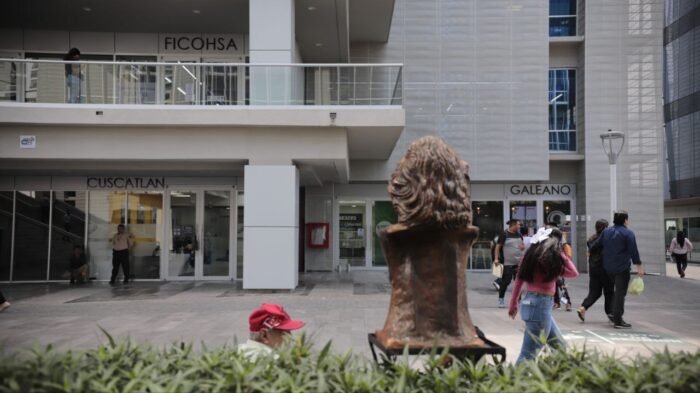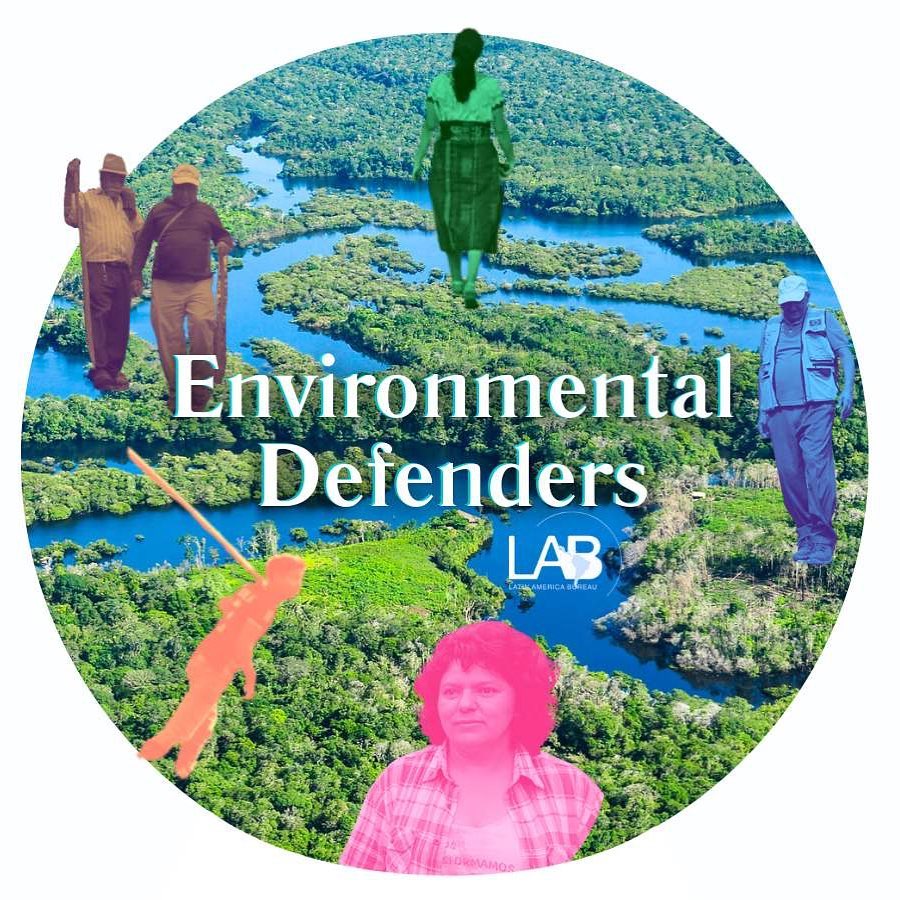A bust of Berta Cáceres was installed in a square in Tegucigalpa’s civic centre, next to a bank owned by the Atala family, who have been accused as one of the masterminds behind her murder. This piece was originally published in Spanish by Contracorriente.
In the ‘Plaza de las Etnias’, a plaza dedicated to Honduras’ ethnic groups located within Tegucigalpa’s Government Civic Center (CCG in its Spanish acronym), lies a resin bust covered in metallic paint, installed in homage to Honduran environmental defender Berta Cáceres. Cáceres was assassinated eight years ago on March 3, 2016 in La Esperanza, Intibucá (one day prior to her 45th birthday). Alongside the bust is a metal column with an explanatory text about the Lenca people to which she belonged and whom she tirelessly campaigned for.
Most public offices are based in and operated from within the CCG, just as they did under the government of Juan Orlando Hernández, despite the fact that on June 30, 2021, in an election speech, the now ruling Xiomara Castro promised to turn its facilities into a ‘center for primary care and specialised consultations and preventive medicine’ if she became president.
One of the few things that have changed is that the CCG now displays public symbols to reiterate how the new government defines itself as “in resistance”. Perhaps the biggest of these is a bust of Berta Cáceres, inaugurated two years ago on March 5, 2022, just a couple of months after Castro took office and the same day she received the Vara Alta of the Lenca people as a token of her commitment to the country’s Indigenous groups.
The bust remains in its place, resisting invisibility. However, paradoxically, right in front of what should be a symbol of Indigenous and environmental struggle, there are two bank branches: one of the Cuscatlán bank, of Salvadoran capital and recently acquired in Honduras by Inversiones Cuscatlán Centroamérica; and one of the Ficohsa bank, a company owned by the Atala family – who have been accused by the COPINH organisation (the Civic Council of Popular and Indigenous Organizations of Honduras, founded by Berta Cáceres and directed by her until her assassination) as a mastermind in Cáceres’ murder.
The Atala family is well known as one of the country’s wealthiest conglomerates. It is a shareholder of financial institutions, football teams, real estate, and other companies. Among its members are Daniel Atala Midence, Jacobo Atala Zablah, Pedro Atala Zablah, and José Atala Zablah – all of whom are part of the board of directors of Desa, the company that developed Agua Zarca, the very hydroelectric project Berta fought against.
Juan Blas Raudales, 60, pauses during his visit to the GCC to say that he considers the location of the bank branches ‘a lack of respect’, and adds that if the government wants to use Berta’s image, they should at least give the bust some maintenance and an improved location.
The administration of the Government Civic Center was consulted via Whatsapp message and email, but at the time of going to press they had not responded.

The Berta Cáceres bust, located in the Government Civic Center in Tegucigalpa, directly faces the Ficohsa bank facilities. Photo CC/Fernando Destephen. Tegucigalpa, February 13, 2024
Clarification: Banco Ficohsa is not involved in the Berta Cáceres case, however its name has appeared in several complaints and protests against financial institutions that are close to the Atala Zablah family. In this case, the best-known partners of Ficohsa in Honduras are Atala Faraj. The observation about the installation of a Ficohsa Bank in front of the monument of Berta Cáceres and how this may be inconsistent, comes from people who expressed their opinion on the matter and we do not intend to detract from them with this clarification.
Main image: Fernando Destephen/Contracorriente


